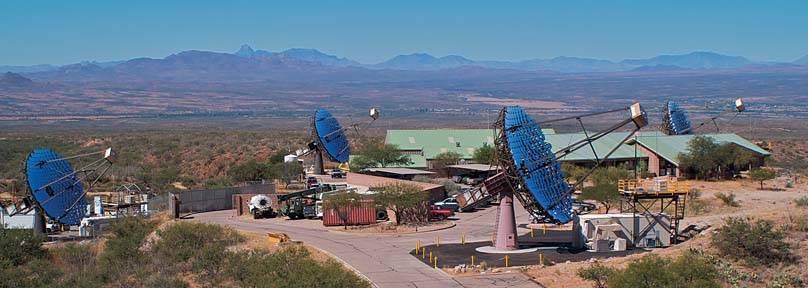
Scientists long tried to figure out why some spots on Earth had more radioactive air than others. It wasn’t until 1912, when Victor Hess took an electrometer skyward in a balloon, that it became clear the extra radiation was coming, not from inside the Earth, but from above it. Way above it. But where exactly did these “cosmic rays,” as physicist Robert Millikan dubbed them, come from? (The rays are, more precisely, high-energy charged particles.) An international network of astronomers, including researchers from McGill, just might have a lead on this mystery.
In a paper published in the November 1, 2009, online edition of the journal Nature, the team announced the first detection of very-high-energy gamma rays originating from a starburst galaxy. The discovery clearly links the life-cycle of stars with the acceleration of cosmic rays. Using the VERITAS (Very Energetic Radiation Imaging Telescope Array System) observatory in Arizona, David Hanna and Kenneth Ragan, professors in McGill’s Department of Physics, and their colleagues found highenergy gamma rays coming from an area of intense stellar production and death. VERITAS is operated by a collaboration of more than 100 scientists from some 20 different institutions in Canada, the United States, Ireland and England.
“This discovery will provide more clues to the production and acceleration of cosmic rays,” says Kenneth Ragan.
“Collectively, cosmic rays carry as much energy as all the starlight in the universe,” adds David Hanna. “A better understanding of their production and propagation will add enormously to the knowledge we have already gained from centuries of optical astronomy.”
Professors Hanna and Raganʼs work is funded by NSERC and FQRNT. In addition, VERITAS receives funding from the U.S. Department of Energy, the U.S. National Science Foundation, the Smithsonian Institution, Science Foundation Ireland and the U.K. Particle Physics and Astronomy Research Council.
